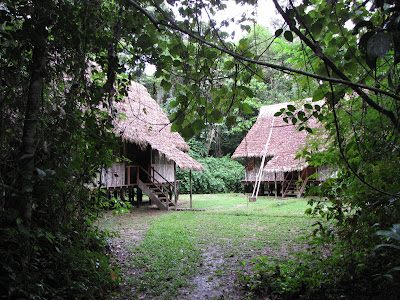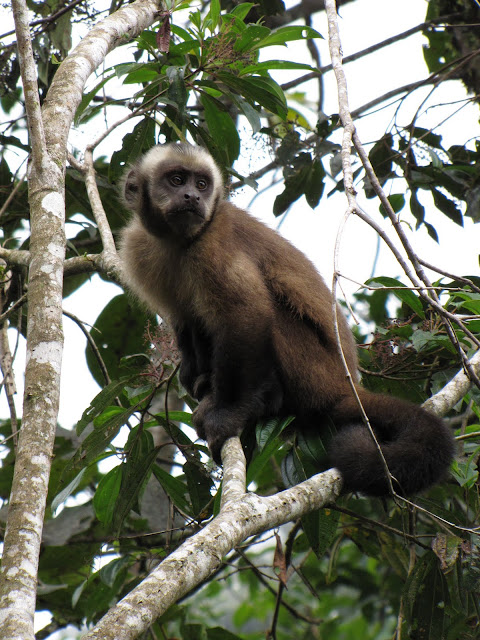Stéphanie was diligently keeping track of the more notable species we observed on our Amazon trek.
So here's the list compiled by the world's newest birdwatcher:
Roadside hawk
Russet-back oropendula
Quetzal (the South American type)
Laughing falcon
Cock-on-the-rock
Russet-back oropendula
Quetzal (the South American type)
Laughing falcon
Cock-on-the-rock
Wooley monkey
Capucin monkey
Coati bear
Wolf spider
Yellow-crowned parrot
Crested oropendula
Dusky-headed parakeet
Bat falcon
Scarlett macaw
Snowy eagret
Yellow eagret
Tiger heron
Coati bird
Wide-necked heron
Cap eagret
Black vulture
Blach hawk
Rasor-billed curassaow
Capibara
Imperial tamarind monkey
Chestnut-billed macaw
Blue headed parrot
Snail kite
Capucin monkey
Coati bear
Wolf spider
Yellow-crowned parrot
Crested oropendula
Dusky-headed parakeet
Bat falcon
Scarlett macaw
Snowy eagret
Yellow eagret
Tiger heron
Coati bird
Wide-necked heron
Cap eagret
Black vulture
Blach hawk
Rasor-billed curassaow
Capibara
Imperial tamarind monkey
Chestnut-billed macaw
Blue headed parrot
Snail kite
White-eyed parakeet
Lesser kiskadee
Vermillion flycatcher
Amazon kingfisher
Orange-cheeked parrot
Mealy parrot
Yellow crowned parrot
Red and green macaw
Chestnut-eared toucan
Dusky titi monkey
Lesser kiskadee
Vermillion flycatcher
Amazon kingfisher
Orange-cheeked parrot
Mealy parrot
Yellow crowned parrot
Red and green macaw
Chestnut-eared toucan
Dusky titi monkey
Speakled chachalaca (Amazonian turkey)
Red-capped cardinal
Man-eating cochroach (dinosaur bug)
White-banded swallow
Cuvier's toucan
Wallow-winged puff bird
Sunbittern
Yellow-neck turtle
Horned screamer
Stork
Moscomits (Amazonian ducks)
Red howler monkey
Bamboo rat
Spider monkey
Tarantula
Howler monkey
Brown capuchin
Garlic tree
Soapbox tree
Coral tree
Red Amazonian squirrel
Rubber tree
Belly Palm
Needle palm
Army ants
Wattle jacana
Black caiman
Snake bird
Watson bird
Osprey
King vulture
Bat falcon
White caiman
Green ibis
Fire ants
Strangle fig tree
God tree
Umbrella tree
Giant river otter
Ocelot
Red-capped cardinal
Man-eating cochroach (dinosaur bug)
White-banded swallow
Cuvier's toucan
Wallow-winged puff bird
Sunbittern
Yellow-neck turtle
Horned screamer
Stork
Moscomits (Amazonian ducks)
Red howler monkey
Bamboo rat
Spider monkey
Tarantula
Howler monkey
Brown capuchin
Garlic tree
Soapbox tree
Coral tree
Red Amazonian squirrel
Rubber tree
Belly Palm
Needle palm
Army ants
Wattle jacana
Black caiman
Snake bird
Watson bird
Osprey
King vulture
Bat falcon
White caiman
Green ibis
Fire ants
Strangle fig tree
God tree
Umbrella tree
Giant river otter
Ocelot
Thanks Steph





























































